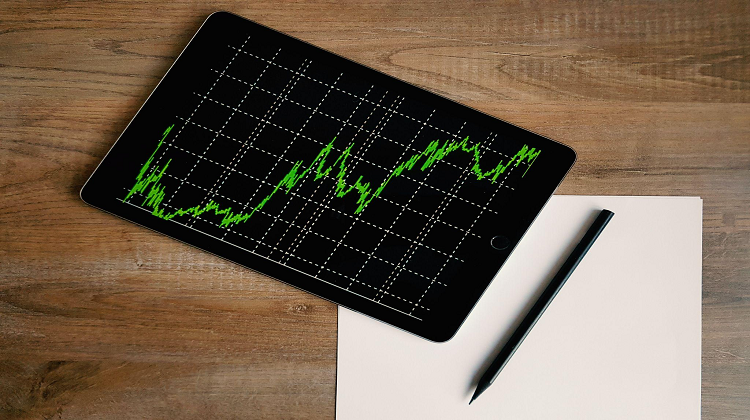With so much noise, finding the best Forex trading tips is complicated. Hammer, Doji, Pullback, Breakout, Trendlines, MACD, RSI, Pivot Points, Fibonacci, and more are everywhere.
But how do you distinguish helpful information from noise? How do you decide what’s essential? How do you avoid superficial fluff that only appeals in hindsight? Do you grasp the issue?
Fret not because this remarkable piece is here to cut through the chaos and provide 12 time-tested Forex trading tips. Get ready for some new insights. Do you want to explore and discover? Let’s get started! Download MetaTrader 5 for PC.
Mastering Fundamental Analysis
Understanding Fundamental analysis
Just picture yourself sitting in front of your computer, conducting a fundamental analysis of the markets. This method sheds light on an asset’s merits and flaws instead of its purely price-focused technical counterpart. If you download MT4 for PC, it will improve your trading experience and equip you with the analytical tools you need to embark on this journey of fundamental analysis.
The fundamental analysis goes beyond stock picking. Traders across asset classes use it to understand market dynamics and make decisions.
Let’s explore the interconnected factors that affect currency pairs with fundamental traders. They study economic data, political landscapes, and even natural disasters to influence market prices.
Traders don’t aimlessly browse data. Instead, they investigate whether a market is undervalued or overpriced. They want to read the market’s pulse and find hidden opportunities.
Fundamental analysis guides explorers through the market’s complex forces. It helps traders see through the noise and find hidden gems.
With fundamental analysis as your ally, dive deep. Assess markets and discover their value to navigate the ever-changing tides with clarity and purpose.
Fair value and fundamental analysis
In financial markets, fundamental analysis thrives. Market fluctuations may temporarily push prices to extremes, but an asset’s fate is normalizing to its fair value.
Fair value? Imagine valuing a company above its share price. You buy its stock, eagerly awaiting your valuation. After that harmonious union, you gracefully part ways, reaping your astute assessment.
Fundamental analysis is the market’s perception-reality dance. This analysis includes non-stocks. Many factors complicate currency valuation. Economic releases, central bank decisions, retail consumption, and other aspects affect fair value.
In this infinite world, your sharp eye sees currency patterns and nuances. As you study market dynamics and use fundamental analysis to determine each currency’s value, you become a master weaver.
Thus, seek fair value, where analysis meets intuition and reveals financial markets’ secrets. In this fascinating journey, perception and reality collide, and fair value prevails.
Risk Management Strategies for Long-Term Success
Risk management for Forex
Forex risk management shines. It lets you build a strong ship with rules and measures to withstand trade storms. You can minimize forex risks with careful planning.
Imagine confidently navigating the ever-changing forex seas. Risk management before sailing is essential for success. Before setting sail, you know you need a solid risk management plan.
Forex risk management helps navigate market volatility. It sets limits, risk tolerance, and boundaries. Careful analysis and decision-making create a strategy that protects you from losses and makes your trading sustainable and resilient.
Every successful trader manages risk. It safeguards their assets. Risk management allows consistent growth in the volatile forex market.
This extraordinary journey requires risk management. Trade with its wisdom. This ensures capital protection, discipline, and long-term success. Risk management guides forex success.
Forex risk management
GBP, USD, JPY, AUD, CHF, and ZAR are traded in the forex market. Supply and demand drive currency values. In forex trading, you buy one currency with another based on the market price. The price of a forex pair is the quote currency needed to buy one base currency.
Three main forex markets:
- Spot market: Physical exchange occurs “on the spot” when the trade is settled.
- Forward market: Traders agree to buy or sell a specific amount of currency at a predetermined price on a future date or range of dates.
- Futures market: Currency is bought or sold at a set price and date. Futures are binding, unlike forwards.
Using Leverage
Leverage is essential when trading forex with CFDs. Leverage gives traders total market exposure with a small margin deposit. Leverage has benefits but increases losses.
A solid forex trading plan is essential. It helps you decide what, when, why, and how much to trade. A trading diary helps track entry and exit points and emotional states.
Risk-reward ratio
Risk-reward ratios are essential to justify trade risk. Traders can assess a trade’s value by comparing its potential loss and gain.
The volatile forex market requires stops and limits. Stops automatically close positions if the market moves unfavorably, while limits lock in profits at a specific price.
Routine visits, guaranteed stops, trailing stops, and limit orders help forex traders manage risk and maximize opportunities.
Conclusion
With so much readily available data and advice for traders, the foreign exchange market can be challenging to navigate. It’s essential to filter out the irrelevant details and zero in on what matters.
With a firm grasp of fundamental analysis, investors can assess market dynamics by looking beyond price changes to consider broader factors like economic data and political climates.

